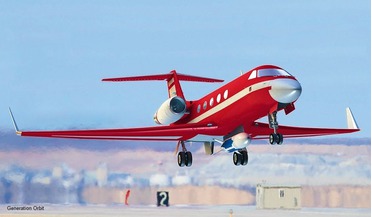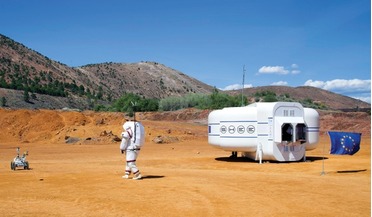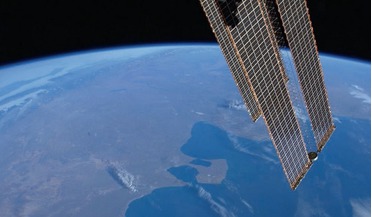 February 2022
Building space-qualified detector chips
February 2022
Building space-qualified detector chips
... of the substantial launch costs of around US $10,000 for every kilogram launched to orbit. This requirement makes lightweight devices that are based on a semiconductor chip an ideal choice for recording the concentrations of various gases from space...
 29 May 2019
Comets inspire new way to make breathable oxygen on other planets
29 May 2019
Comets inspire new way to make breathable oxygen on other planets
...home by pulling CO2 out of Earth's atmosphere and turning it into oxygen. "Is it a final device? No. Is it a device that can solve the problem with Mars? No. But it is a device that can do something that is very hard," says Giapis. "We are doing some...
 March 2015
Small is the new big: why micro-satellites require new laws
March 2015
Small is the new big: why micro-satellites require new laws
... with larger satellites could be avoided by making it mandatory that every Nano/Micro-Satellite be equipped with a tracking device, such as the retro-reflector proposed by Dr. Stuart Eves during the last Re-Inventing Space Conference in London. This...
 October 2016
Project MOONWALK
October 2016
Project MOONWALK
... over longer periods of time and it might be necessary to either reduce the weight of future suits or develop specific devices to support the astronaut during long EVAs. To be able to conduct sampling of loose soil or smaller rocks, two different...
 July 2014
Space technology transfer portals and the chance progress of innovation
July 2014
Space technology transfer portals and the chance progress of innovation
... unrelated products; for example, research into nano-robots for space applications has spawned a hand-held device for measuring blood viscosity in patients taking anti-coagulants;1 while research on ways to land instrumentation on Saturn’s moon...
 March 2015
Supplanting the state: rewards and risks
March 2015
Supplanting the state: rewards and risks
...IoT) to refer to a future filled with connected devices—machines with sensors that can automatically connect (or “... – thus shortening its lifespan. “If one of these devices is compromised, the entire satellite communications infrastructure could be ...